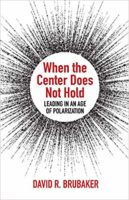
Leading a successful change process in a congregation, even a very traditional one, is possible. But to do so, a leader must earn the right to make that change and partner with others to make it happen. Lone-ranger leaders who ride into Dodge and transform an entire community exist only in the movies. In the reality of congregational life, we need a patient posse.
The Search Committee of the Placid Hills congregation worked tirelessly to recruit Rev. John Smith for the position of lead pastor. Rev. Smith was known to be a “gifted preacher” and “strong leader” who in his previous congregation had overseen a major building expansion and a significant increase in attendance. Attendance and giving were both in decline at Placid Hills, and search committee members agreed that only someone with a proven track record as a change leader could turn things around.
Committee members were delighted when Rev. Smith accepted their invitation to apply for the lead pastor position, and quickly scheduled an interview. Rev. Smith performed so well in his interview and visit that consensus to recommend that the church board offer him the position emerged even before the visit concluded. The chair of the Search Committee summarized the hopes of many on the committee when she said, “We all believe that God is calling you to lead the changes we need at Placid Hills!”
The first year of Rev. Smith’s ministry was an explosive time of change and growth at Placid Hills. A number of community members who heard about the “inspiring new pastor” visited the congregation and many stayed. Prodded by Rev. Smith, the Worship Committee hastily organized a contemporary worship service featuring drums and guitars that delighted the teenagers in the congregation, even if many of their parents remained nonplussed by the change. Rev. Smith also urged that the board and committee structure the congregation had used for years be changed to a “team ministry model” that his previous congregation had successfully adopted.
By the beginning of Rev. Smith’s second year, however, it was apparent that not everyone at Placid Hills was happy with the changes. A beloved staff member who had led music and worship for two decades abruptly resigned, saying only that she had “philosophical differences” with the direction of worship at Placid Hills. A group of parents of teenagers organized a meeting that consisted primarily of grievances about the youth ministry at Placid Hills—and particularly about the new youth leader that Rev. Smith recruited shortly after his arrival. And the chair of the church board began to complain openly about the proposed change to a team ministry model—claiming that it would “reduce the authority of the laity” at Placid Hills.
By year three of Rev. Smith’s ministry the congregation had polarized. About a third of the congregation, many of them long-term members, were deeply angry about the many changes that Rev. Smith had initiated. Another third of the congregation, many of them newer arrivals, were delighted with the changes and very happy with Rev. Smith’s leadership. And the remaining third were admittedly ambivalent about all the changes but were mostly grieved about the conflict and praying that it would not split the church.
The conflict came to a head at a church board meeting when the chair of the board publicly accused Rev. Smith of a “power grab” in his efforts to eliminate the board and committee model in favor of team ministry. Under increasing stress due to opposition from what he termed the “old guard” in the church, Rev. Smith exploded, “This church was dying when you called me here three years ago,” he virtually yelled. “You told me very clearly that ‘we want you to lead change at Placid Hills,’ and now that I’m doing exactly that you’re undermining me at every opportunity! You don’t want a leader—you want an undertaker who can give you a decent burial!”
According to research I conducted with 100 congregations in the American Southwest nearly two decades ago, the “Placid Hills/Rev. Smith” scenario is more common than we have assumed. While not every change that a congregation undertakes correlates with conflict, congregations that added a worship service (usually a contemporary one) and changed their decision-making structure (even by moving to “team ministry”) were seven times more likely to experience significant conflict in a five-year period than were similar congregations that did neither of those things.
Why Conflict Happens
Why might that be true? In Promise and Peril: Understanding and Managing Change and Conflict in Congregations, I discuss three reasons for this phenomenon:
- Worship is the primary expression not only of a congregation’s theology but also of its culture. Even something as simple as adding a contemporary worship service represents a “disruption of ritual” which can be unsettling to more established members of the congregation. While such changes often need to happen to attract and retain newer members, they must be done in ways that are respectful of the sensibilities of existing congregational members.
- Structure is the mechanism by which a congregation allocates power and authority. While a move from established “committees” to a “team ministry model” may indeed be indicated, those who have chaired committees and done the “work of the church” for decades may themselves feel disempowered and disrespected by what seems a simple structural change.
- Process is the way in which a congregation goes about its ministry and work, including how it does change. Even beyond what changes are made, congregational members seem most concerned about how the change is done. Congregational leaders, particularly those who come in from the outside, have to earn the right to make change. And change is far more likely to be accepted when it is done with people rather than to people.
Leaders who want to successfully implement significant changes are advised to acknowledge power (their own and others), respect and name the losses that occur in any transition process, anticipate conflict, move slowly, and provide non-anxious leadership. Most importantly, they need to partner with a diverse group of lay leaders in the congregation (not just their natural allies) to design and implement needed changes. If we want to be successful in our efforts to transform our congregations, we will take the time to earn the right to do so, and we will never attempt to do it alone.
This article first appeared in Perspectives in 2014.
David Brubaker has consulted with organizations and congregations in the U.S. and a dozen other countries on organizational development and conflict transformation. He is the author of Promise and Peril, on managing change and conflict in congregations, and When the Center Does Not Hold, on leading in an age of polarization. David serves as Dean of the School of Social Sciences and Professions at Eastern Mennonite University and is a professor of organizational studies.


